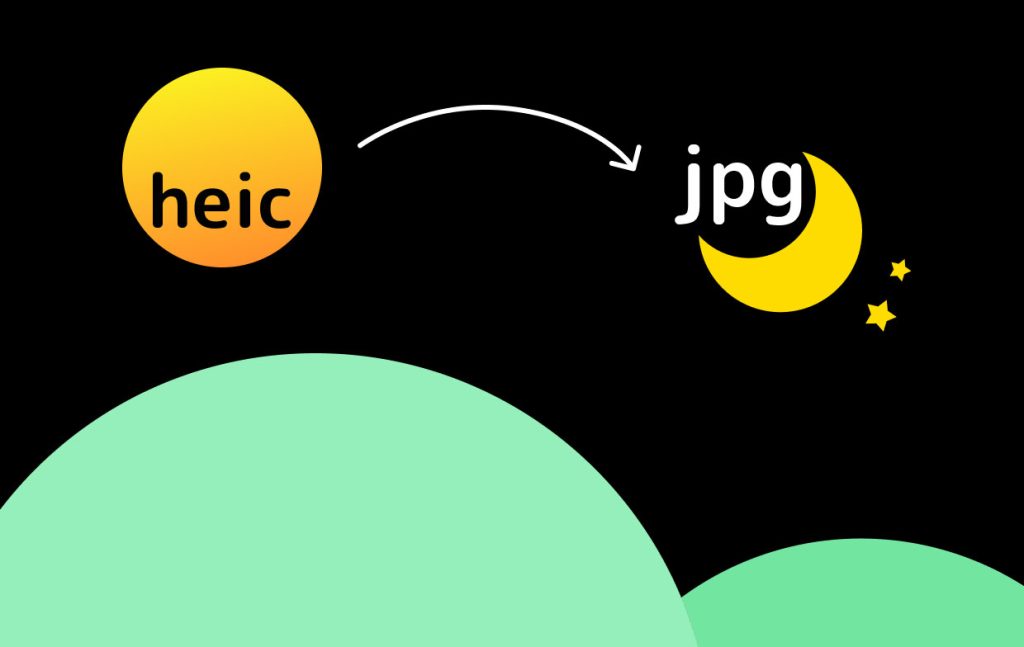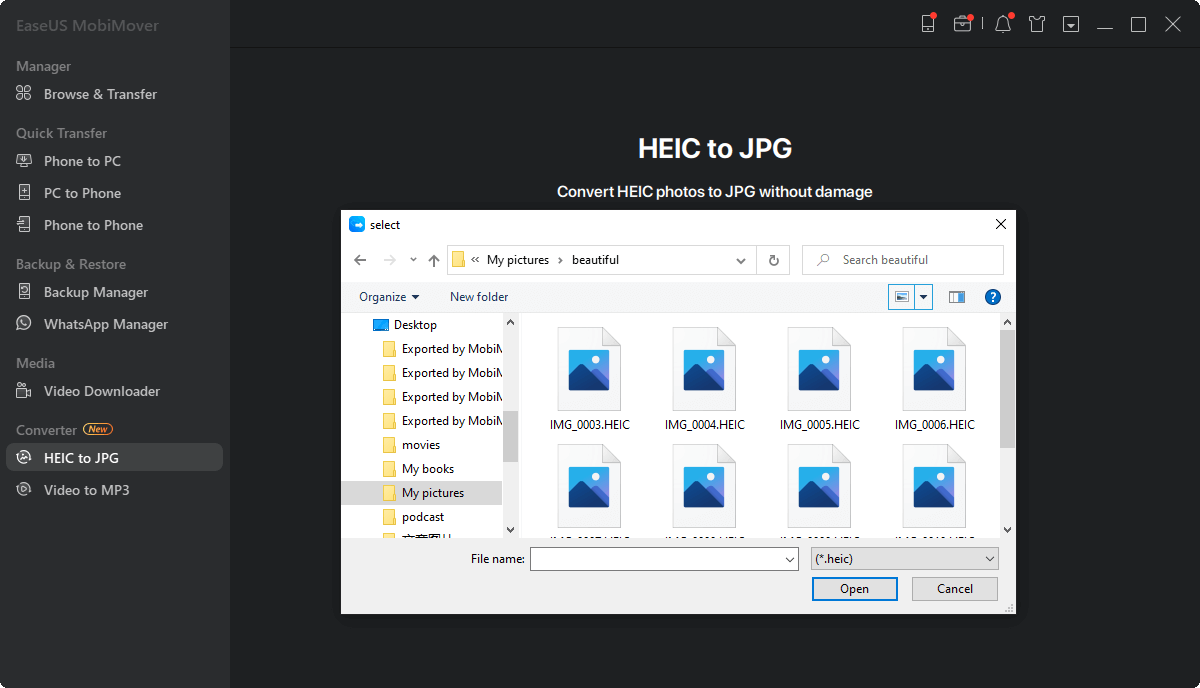In the world of photography and digital imaging, file formats play a significant role in determining the quality and usability of your pictures. Among the many formats available, HEIC has gained popularity due to its efficient compression and excellent image quality. However, when it comes to printing, converting HEIC to JPG often becomes a necessity. This article explores why HEIC TO JPG conversion is essential for printing needs and how to ensure your images maintain the best possible quality throughout the process.
Understanding the Importance of HEIC to JPG Conversion for Printing
HEIC, or High Efficiency Image Container, is favored for saving storage space while retaining image quality. This format is the default for many Apple devices, including iPhones and iPads, providing users with sharp images at smaller file sizes. However, despite these benefits, HEIC files face compatibility issues with many printers and photo printing services.
Most printing devices and software natively support JPG because it’s a widely accepted format that balances quality and file size. When preparing images for print, converting HEIC to JPG ensures your photos can be easily processed by printers without losing clarity or color accuracy. Without this conversion, your high-quality HEIC photos might fail to print correctly or lose detail during the process.
Why JPG is the Preferred Format for Printing
JPG, also known as JPEG, has been the standard for digital images and printing for many years. Its widespread support across devices, printers, and photo editing software makes it a reliable choice. The format’s lossy compression can be adjusted to preserve excellent image quality while keeping file sizes manageable, which is important for high-resolution prints.
When you convert HEIC to JPG, you gain access to a format that printers can read without problems. This reduces the risk of errors, color shifts, or unexpected print quality issues, providing a smoother experience whether you print at home, a local store, or through an online service.
Ensuring High-Quality HEIC to JPG Conversion for Print
Not all HEIC to JPG converters are created equal, especially when printing is the goal. The conversion process should maintain the original image’s resolution, color profile, and detail. A poor-quality conversion may introduce compression artifacts, color inaccuracies, or reduced sharpness, which are noticeable in printed photos.
Professional converters use sophisticated algorithms that minimize quality loss during HEIC to JPG conversion. These tools can handle high-resolution HEIC files and output JPGs that are print-ready, preserving the richness and detail that make your photos stand out on paper.
The Role of Resolution and Color Profiles in Printing
Resolution is a critical factor in printing. To achieve sharp, detailed prints, images must have a sufficient pixel density, typically measured in DPI (dots per inch). During HEIC to JPG conversion, it’s essential to keep the resolution intact so that your images don’t appear blurry or pixelated when printed.
Color profiles are another important consideration. HEIC files often use advanced color management systems that may not translate perfectly when converted to JPG. The best HEIC to JPG converters allow you to preserve or convert color profiles accurately, ensuring that the colors you see on screen match the final printed result. This fidelity is especially important for professional photographers, graphic designers, and anyone relying on precise color reproduction.

Batch Conversion for Multiple Prints
For photographers or businesses handling multiple images for printing—such as wedding albums, product catalogs, or promotional materials—batch HEIC TO JPG conversion is a huge time-saver. Instead of converting files one by one, you can convert entire folders at once while ensuring consistent quality across all images.
Batch conversion tools that focus on printing needs optimize every file for the best output, taking into account resolution and color profiles so that every JPG image is ready to deliver excellent print results.
Online and Offline HEIC to JPG Conversion Options
Choosing between online and offline HEIC to JPG converters depends on your specific needs. Online converters offer the convenience of quick access without installation, ideal for occasional conversions or users with limited storage space. Many online tools now support high-quality, print-ready conversions suitable for standard printing requirements.
Offline software, meanwhile, often provides more advanced settings and better support for batch conversion. These programs are preferred by professionals who need precise control over image quality, resolution, and color management to meet demanding print standards.
Preparing Your JPG Files for Printing
After converting HEIC to JPG, it’s wise to double-check your JPG files before sending them to print. Ensure that the resolution meets printing requirements—usually 300 DPI for high-quality prints—and that the colors appear natural on your calibrated monitor.
You may also want to use photo editing software to make any final adjustments, such as cropping, brightness correction, or color enhancement, to ensure your prints look exactly as you envision.
The Benefits of Converting HEIC to JPG for Printing
Converting HEIC to JPG for printing offers several benefits. It guarantees compatibility with all printers and printing services, minimizes unexpected technical issues, and ensures your photos maintain their visual appeal on paper. This process also allows you to standardize your workflow, using a single format that works seamlessly across all devices and platforms.
By converting HEIC to JPG, you take control of your print output, safeguarding the quality of your images from screen to paper.
Common Challenges and How to Avoid Them
One common challenge when converting HEIC to JPG for printing is maintaining the original image’s quality while dealing with file size limitations. Some online converters reduce image quality to speed up processing or lower bandwidth usage, which can negatively affect prints.
To avoid this, choose converters that explicitly offer high-resolution, lossless conversion options and avoid automatic compression. Also, ensure your converted JPGs retain embedded color profiles for consistent print colors.
Future Trends in HEIC to JPG Conversion for Printing
As printer technology advances and software support improves, HEIC files may one day be printable without conversion. Until then, HEIC to JPG conversion remains a necessary step for most users.
Future converters might integrate AI-driven enhancements to optimize images specifically for print, adjusting sharpness, contrast, and colors automatically while preserving original quality. These innovations will make converting HEIC to JPG for printing even easier and more reliable.
Conclusion
For anyone serious about producing high-quality prints from their digital images, converting HEIC to JPG is an essential part of the workflow. The JPG format’s universal compatibility, combined with careful, high-quality conversion processes, ensures your photos come out looking their best on paper.
Choosing the right HEIC to JPG converter that focuses on resolution, color accuracy, and quality preservation will help you achieve stunning print results every time. By understanding the importance of conversion for printing and selecting the appropriate tools, you can confidently prepare your images for any printing project.



